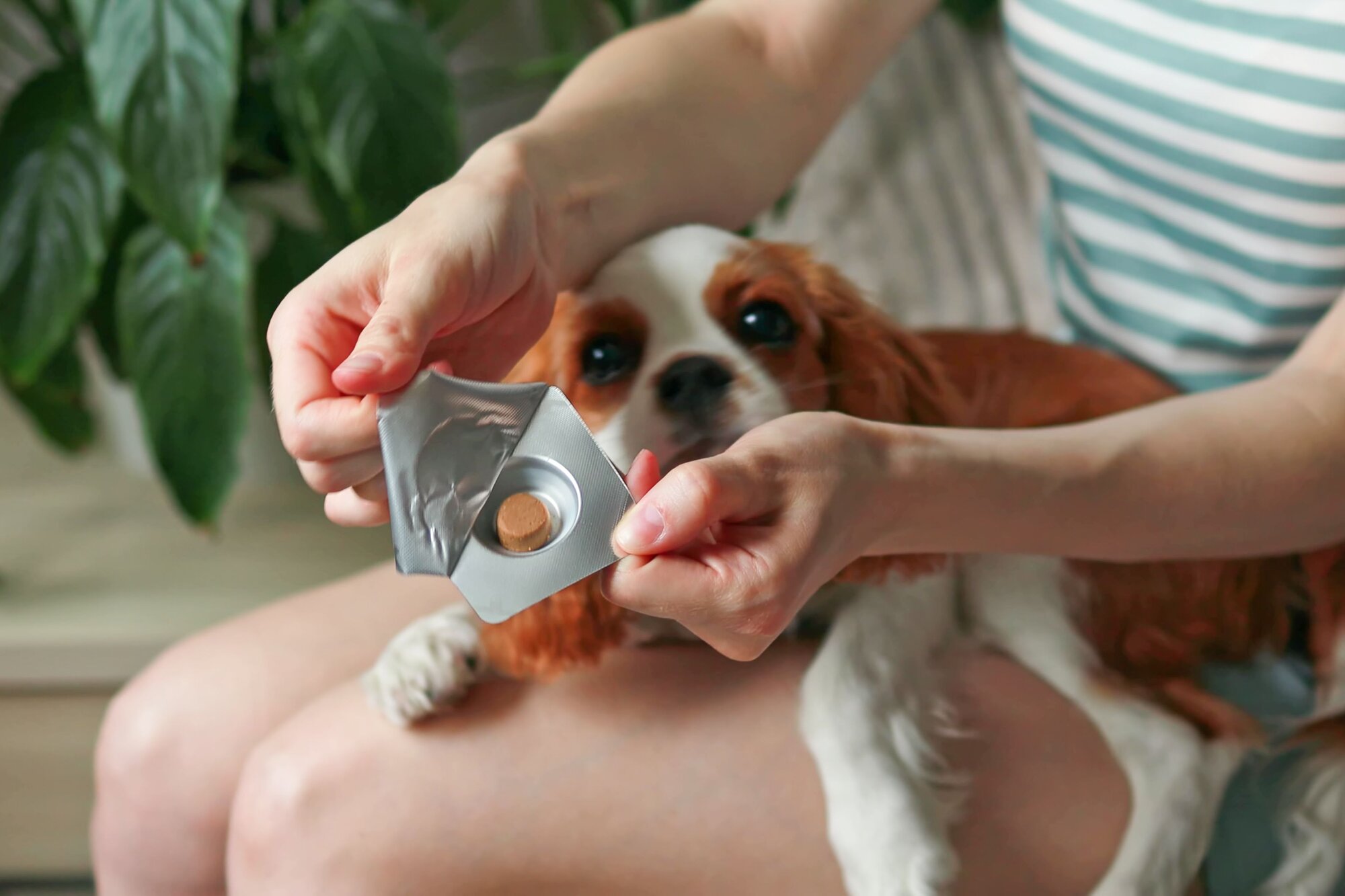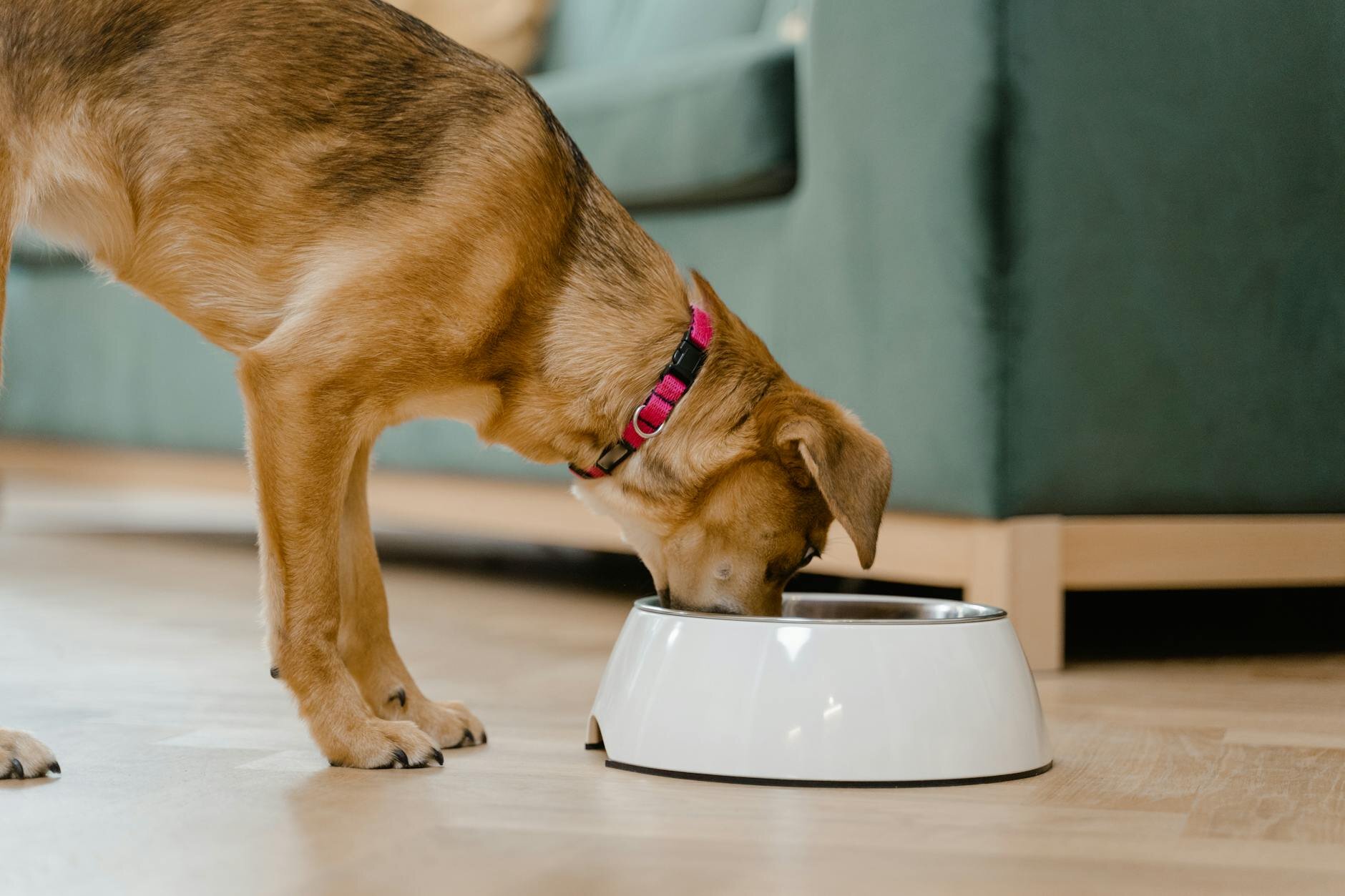Last Updated: 17/06/2025
How To Stop My Dog Scratching
Is your dog itchy? Find out how to stop your dog scratching and more about fleas food allergies and atopy as well as remedies for your itchy dog.
Author: Dr Carla Paszkowski BVSc (Hons)
Reading Time: 32 minutes - long read
Does your dog suffer from itchy skin that just won't seem to resolve? Are you kept awake night after night by your dog's incessant scratching, biting, and licking?
Pinpointing the origin of your dog's sensitive or itchy skin can be an exhausting endeavour. And worse still, you might feel that you've finally found a cure for your dog's scratching, only to discover a new flare up for no obvious reason.
Scratch, scratch, lick, lick, bite, bite... why won't it stop?!
Most of the time, excessive or persistent scratching arises from an allergy, and unfortunately, every case is unique and won't always follow the same course.
Understanding the reasons behind your dog's scratching is crucial to being able to manage the irritation effectively. Blood and intradermal tests can be performed by a vet to pinpoint the causal allergen, however due to the relatively high cost of these tests, a diagnosis is often reached by trying to exclude each cause.
In this article, we'll delve into the common causes of excessive scratching in dogs, ranging from allergies to parasites, the process of elimination of each cause, and explore practical solutions to help you manage the irritation for your dog. Whether they dealing with seasonal allergies, dry skin, or pesky fleas, weâll provide actionable tips and advice to help you keep your canine companion comfortable and itch-free.
Step 1: Rule Out Fleas As The Source Of Scratching

This is the first place you must start, even if you don't think your dog has fleas. Not only is flea allergy one of the most common causes of itchy skin, but it is also the easiest to rule out.
This is done quite simply by putting your dog on a reliable and effective flea preventative treatment like Bravecto, Nexgard or Simparica. We generally recommend staying away from flea powders, flea shampoo, and some older generation topicals, as they aren't considered quite as effective nowadays.
Not sure whether your flea prevention is considered reliable? Read our vet's article on which is the best flea and tick treatments in Australia.
Most pet owners with a flea problem in the house will never actually see fleas. What you may find, however, is flea dirt. This is a black 'dirt'-like granular residue found in your dog's fur. Flea dirt is actually flea faeces. You can determine the difference between 'regular' dirt and flea dirt by getting a piece of white paper or a paper towel and placing some of the dirt onto it. Add a small amount of water to the dirt - if it turns a reddish colour, this is flea faeces. The red colour is caused by the high blood content from feeding female fleas. For more information, read through How to Tell if a Dog has Fleas.
Dogs with flea allergy dermatitis may not show signs of fleas or flea dirt in their coat, because just one bite of a flea can be enough to set off an allergic reaction. For this reason it is important to ensure that your dog is covered for fleas before proceeding further. Find out more about how to get rid of fleas.
Our Top Recommended Flea Treatments
Step 2. Rule Out Food Allergies

If itchiness still persists despite adequate flea prevention, the next step is to rule out the possibility of a food allergy in your dog.
A lot of the time, symptoms of food intolerance will manifest in the skin and coat rather than via the digestive tract. The most common sources of food allergies in dogs are proteins, particularly beef, wheat, dairy, chicken, egg and soy. When the protein crosses the gut wall into the blood stream, the dog's immune system mounts an abnormal response causing them to become sensitised to the protein, resulting in an allergic reaction.
To find out what your dog is allergic to, an elimination diet is usually recommended by your vet. This can be done in one of two ways; either by feeding a veterinary dog diet containing a hydrolysed protein source, or by feeding your dog a diet containing a novel protein. Whichever diet you choose, it needs to be fed exclusively (no extras) for at least 6 to 8 weeks. At the end of that time if the dog's skin has settled, a diagnosis of a food allergy can be made. If not, a food allergy is much less likely.
A hydrolysed protein is a protein source that has been been broken up into smaller pieces that cannot bind allergy receptors on your dog's immune cells. Please note that hydrolysed protein diets are therapeutic and therefore should only be used under the recommendation and supervision of your dog's treating veterinarian.
A novel protein is one that your dog has never been exposed to before, like venison, duck or fish. Read more about best hypoallergenic dog foods and how they work.
For more information on nutrition's role in skin care, see our article What is the Best Dog Food for Skin Allergies?
Top Recommended Diets for Food Allergies
Step 3. Consider Atopy
Once flea allergy dermatitis and food allergies are excluded, quite often atopic dermatitis is suspected.
What is atopy in dogs?
Atopy, or atopic dermatitis, is a generalised allergy to things in the environment like pollen, dustmites, grasses, etc. Some dogs with atopy might only be allergic to one or two things, but others might be allergic to literally dozens of allergens. This is similar to humans - ever noticed how some people who are allergic to cats are often also allergic to dust and pollen too?
Like hayfever in humans, dogs can experience symptoms in the spring time as grass, plants, and pollens start to proliferate. For some unfortunate dogs, however, symptoms can last all year round (particularly if your dog is allergic to dust).
Symptoms commonly manifest as seasonal itching, biting or licking of the paws, itchy ears, and watery or goopy eyes (conjunctivitis).
Unfortunately, unlike changing your pet's diet or keeping flea control up to date, avoiding pollen and grass is not a feasible task. Unless your pooch is kept in a quarantine zone, pollen and dust exposure is inevitable. If your dog is experiencing environmental allergies, you will need to visit a veterinarian for advice on oral or injectable medications, such as Apoquel.
Dogs with atopic dermatitis can have intradermal skin testing with a veterinary dermatologist to identify the cause of their allergies. This is usually followed by a course of immunisations to desensitise the dog against the cause of the allergy, helping to control symptoms. Although not always effective, this approach is the best way to avoid long term use of steroids.
If intradermal testing and desensitisation are not effective or available, other medications and methods can be used to try and minimise the side effects, or strengthen the skin barrier. Which brings us to our next step...
Step 4. Strengthen Your Dog's Skin Barrier

This step, although listed here as number 4, can really be implemented from the beginning of the diagnostic process. A stronger skin barrier means that your dog has a stronger physical barrier to the causative allergen, and also reduces the inflammatory response as the skin is thicker, healthier, and stronger.
Thankfully it is easy to help strengthen the skin barrier at home, with some affordable over-the-counter products, and some easy at-home changes.
1. Provide beneficial oils into the diet
Beneficial oils to help nourish the skin from the inside out. You can either swap over to a dog food for sensitive skin or a fish-based dog food, or you give omega fatty acids as a supplement.
Many people find that a change in food is the easiest way to increase their dog's intake of omega fatty acids, as it doesn't require a change in their daily routine. Royal Canin Dermacomfort is enriched with an exclusive nutrient complex that helps to support the skins barrier role, as well as omega 3 and 6 fatty acids. It is also highly palatable for fussy dogs.
2. Apply a soothing skin lotion
Not only can moisturising conditioners provide a physical barrier, but they can help nourish the skin cells so they are stronger.
Does dog shampoo help to stop skin scratching?
For some dogs, the source of sensitive skin may be related to a more local issue like a strongly perfumed shampoo. When using products on your pooch's skin or coat, never use human products. Only ever use shampoo approved for use with dogs.
However, not all shampoos are bad. Some shampoos can provide relief from inflammation or help with infection. Shampoo is not a replacement for treatment though and most pets will still require an oral or injectable medication from a vet.
Yeast or fungal infections will also cause symptoms which manifest through the skin and coat, such as itchy skin or inflammation. Malaseb medicated shampoo is an antifungal, antibacterial and antipruritic solution to not only alleviate discomfort but also help treat yeast and fungal infections.
Read more about the different types of dog shampoo in our guide to What is the Best Dog Shampoo?
Finding the cause of itchy or sensitive skin can be a time consuming endeavour but it's worth it to see that tail wagging again. Keep your dog treated for fleas, consider a diet change, and remember to strengthen the skin barrier. If your dog has ongoing itchiness despite your best efforts, we recommend further workup with your vet.
Further Reading
History
Our experts continually monitor the health and wellness space and we update our articles when new information becomes available.
Tue Apr 2 2024
Written by Dr Carla Paszkowski BVSc (Hons)Dr Carla Paszkowski BVSc (Hons)
Veterinarian
Dr. Carla graduated from the University of Queensland in 2013 with a Bachelor of Veterinary Science and worked for a number of years in small animal clinics across South East Queensland. While Carla enjoys most facets of clinical veterinary work, she holds a special passion for feline medicine, pocket pets, and nutrition.

